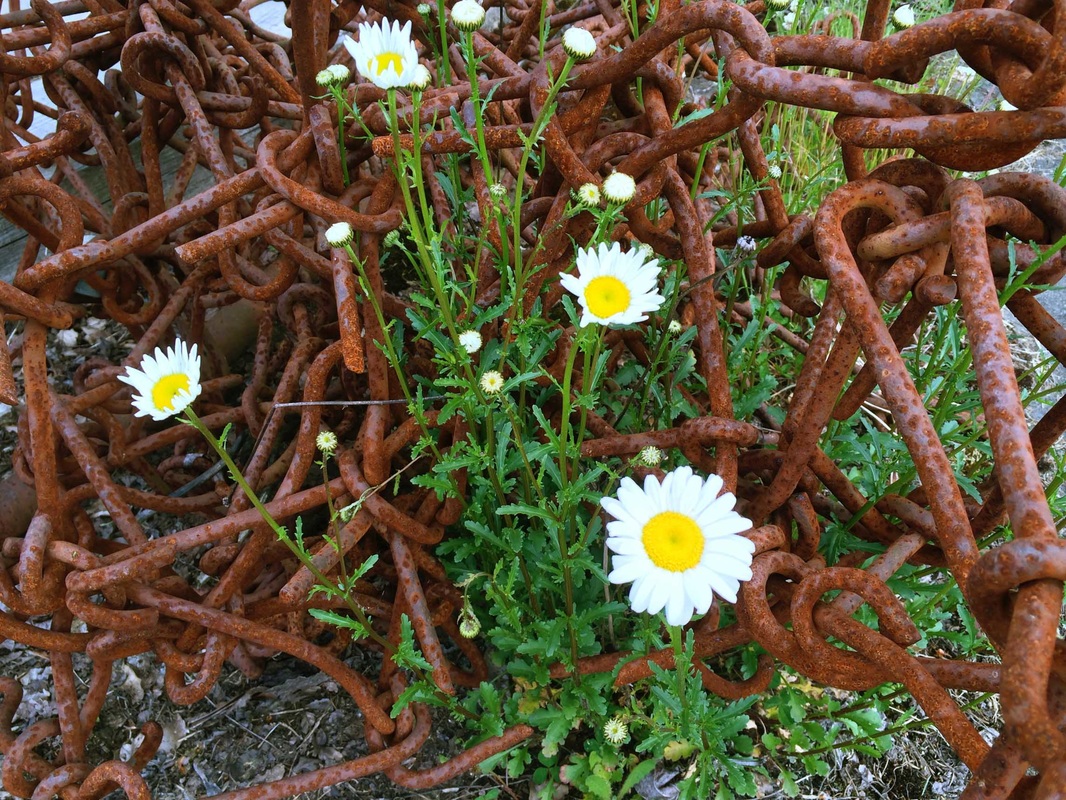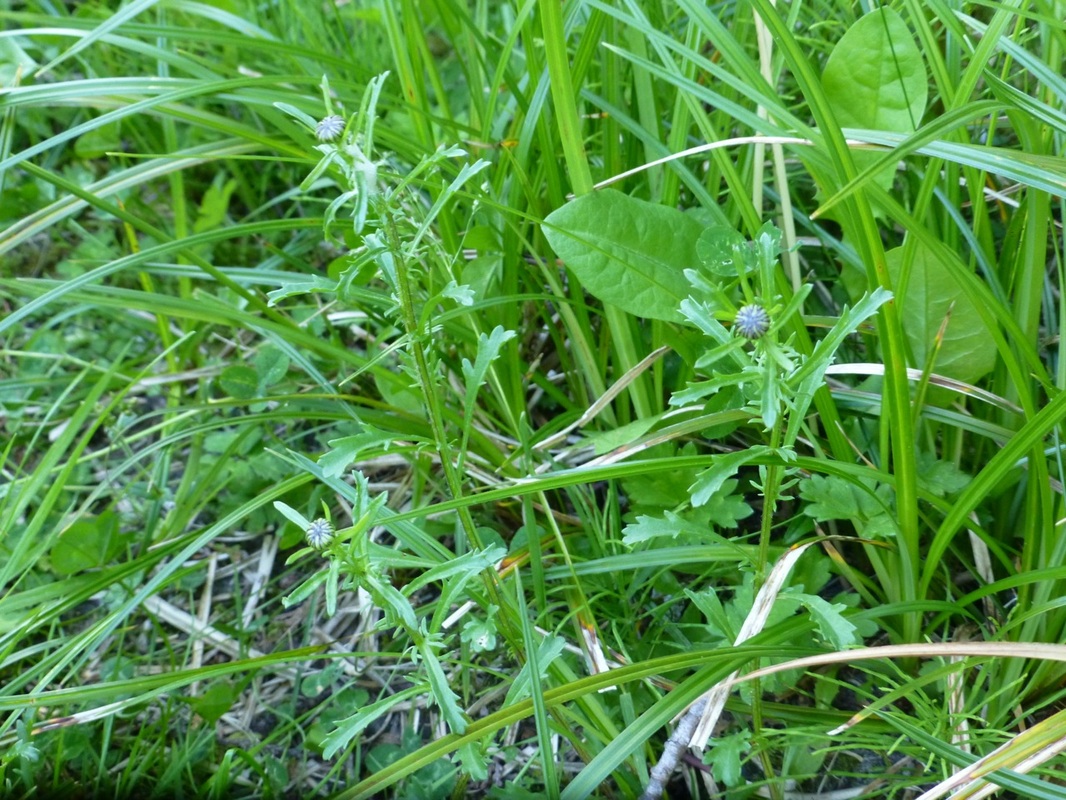Oxeye daisy • Leucanthemum vulgare
{Leukos = white, anthemon = flower}
Identification
Oxeye daisy is an introduced perennial with large daisy flowers that occur singly on 20-80 cm tall stems. The stalked basal leaves have an overall spoon shape, with lobes and large, rounded teeth. The similarly-shaped stem leaves become stalkless closer to the flower. Oxeye daisy produces a strong sage-like smell.
Habitat & Range
Introduced from Europe, oxeye daisy can be come invasive and tends to form large and dense populations, especially in disturbed locations such as roadsides, meadows. It is found at all elevations in all regions of British Columbia, though it most commonly grows at low elevations and in the southern half of the province as it easily establishes in and around settlements. It is now found throughout North America. See the GOERT species page for information on managing this species when it becomes invasive.
Human Uses
Young oxeye daisy leaves are edible and tasty. Flower heads may be used to make wine. The plant was historically used to treat respiratory illnesses such as whooping cough and asthma; the leaves were also used in wound dressings.
iNaturalist
https://www.inaturalist.org/taxa/56057-Leucanthemum-vulgare
Oxeye daisy is an introduced perennial with large daisy flowers that occur singly on 20-80 cm tall stems. The stalked basal leaves have an overall spoon shape, with lobes and large, rounded teeth. The similarly-shaped stem leaves become stalkless closer to the flower. Oxeye daisy produces a strong sage-like smell.
Habitat & Range
Introduced from Europe, oxeye daisy can be come invasive and tends to form large and dense populations, especially in disturbed locations such as roadsides, meadows. It is found at all elevations in all regions of British Columbia, though it most commonly grows at low elevations and in the southern half of the province as it easily establishes in and around settlements. It is now found throughout North America. See the GOERT species page for information on managing this species when it becomes invasive.
Human Uses
Young oxeye daisy leaves are edible and tasty. Flower heads may be used to make wine. The plant was historically used to treat respiratory illnesses such as whooping cough and asthma; the leaves were also used in wound dressings.
iNaturalist
https://www.inaturalist.org/taxa/56057-Leucanthemum-vulgare
References
Leucanthemum vulgare Oxeye Daisy. Invasive species in Garry Oak and associated ecosystems in British Columbia. Garry Oak Ecosystem Recovery Team. Accessed 07/01/2015.
Leucanthemum vulgare Lam. In Klinkenberg, Brian. (Ed.). E-Flora BC: Electronic Atlas of the Plants of British Columbia. Lab for Advanced Spatial Analysis, Department of Geography, University of British Columbia, Vancouver. Accessed 07/01/2015.
Oxeye daisy Leucanthemum vulgare. Adopt a Seed. Kew Royal Botanic Gardens. Accessed 07/01/2014.
Pojar, J. and MacKinnon, A. (1994). Plants of Coastal British Columbia. Vancouver, BC: Lone Pine Publishing. P. 281.
Authors and editors of page
Kelly Fretwell, Ian Cruickshank, and Brian Starzomski (2015).
Leucanthemum vulgare Oxeye Daisy. Invasive species in Garry Oak and associated ecosystems in British Columbia. Garry Oak Ecosystem Recovery Team. Accessed 07/01/2015.
Leucanthemum vulgare Lam. In Klinkenberg, Brian. (Ed.). E-Flora BC: Electronic Atlas of the Plants of British Columbia. Lab for Advanced Spatial Analysis, Department of Geography, University of British Columbia, Vancouver. Accessed 07/01/2015.
Oxeye daisy Leucanthemum vulgare. Adopt a Seed. Kew Royal Botanic Gardens. Accessed 07/01/2014.
Pojar, J. and MacKinnon, A. (1994). Plants of Coastal British Columbia. Vancouver, BC: Lone Pine Publishing. P. 281.
Authors and editors of page
Kelly Fretwell, Ian Cruickshank, and Brian Starzomski (2015).






